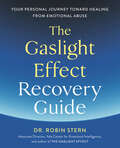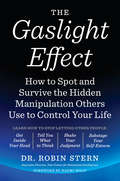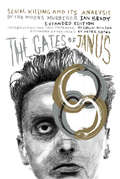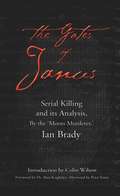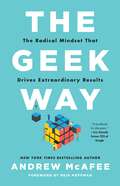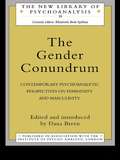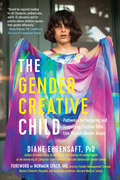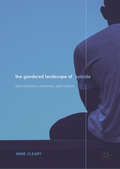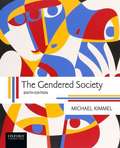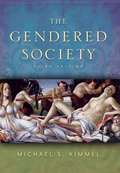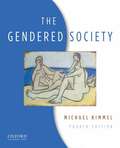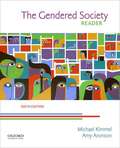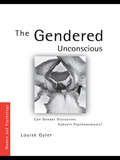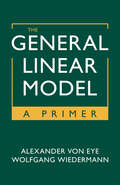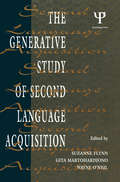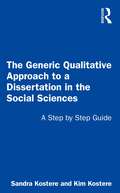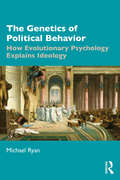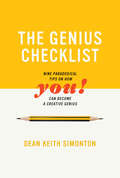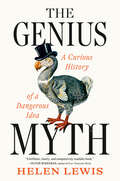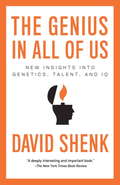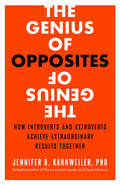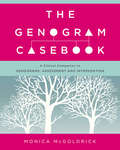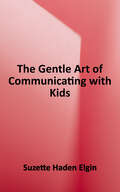- Table View
- List View
The Gaslight Effect Recovery Guide: Your Personal Journey Toward Healing from Emotional Abuse
by Dr. Robin SternThis informative guided journal helps victims of gaslighting understand the dynamics of challenging and unhealthy relationships—and how to leave one—from the author of The Gaslight Effect.In 2007, Dr. Robin Stern coined the phrase "gaslight effect" to explain the long-term effects of repeated gaslighting: an insidious and sometimes covert form of emotional abuse in which a gaslighter undermines and controls another person by deflecting, twisting, and denying their reality. Gaslighting can happen in a romantic relationship, between family members, or at work—but in every case, it leaves you constantly second-guessing yourself, unable to make simple decisions, and destabilized from the constant reality shifts.The Gaslight Effect Recovery Guide is a tool for personal exploration that will help you identify if you are part of a pattern of emotional abuse and pull yourself out of that dynamic with a few crucial mindset shifts. Through prompts, checklists, quizzes, and guided reflective questions, you will explore past and present relationships, gain the confidence to leave an abusive partner or set boundaries in an unavoidable situation, and heal after gaslighting. This interactive workbook will help you:Name the Gaslight Effect and identify abuse in any relationship.Heal a relationship or free yourself from a gaslighting dynamic.Learn what makes you vulnerable to gaslighting.Deepen your self-awareness and self-compassion.Expand your capacity to trust yourself and reach out to others for support.The Gaslight Effect Recovery Guide will help you reveal the truth behind gaslighting interactions, allowing you to cultivate happy, healthy relationships and regain your joy, creativity, and sense of self.
The Gaslight Effect: How To Spot And Survive The Hidden Manipulation Others Use To Control Your Life
by Robin SternAre You Being Gaslighted? Your husband crosses the line in his flirtations with another woman at a dinner party. When you confront him, he asks you to stop being insecure and controlling. After a long argument, you apologize for giving him a hard time. Your boss backed you on a project when you met privately in his office, and you went full steam ahead. But at a large gathering of staff--including yours--he suddenly changes his tune and publicly criticizes your poor judgment. When you tell him your concerns for how this will affect your authority, he tells you that the project was ill-conceived and you'll have to be more careful in the future. You begin to question your competence. Your mother belittles your clothes, your job, your friends, and your boyfriend. But instead of fighting back as your friends encourage you to do, you tell them that your mother is often right and that a mature person should be able to take a little criticism. If you think things like this can't happen to you, think again. Gaslighting is when someone wants you to do what you know you shouldn't and to believe the unbelievable. It can happen to you and it probably already has. How do we know? If you consider answering "yes" to even one of the following questions, you've probably been gaslighted:Does your opinion of yourself change according to approval or disapproval from your spouse? When your boss praises you, do you feel as if you could conquer the world? Do you dread having small things go wrong at home--buying the wrong brand of toothpaste, not having dinner ready on time, a mistaken appointment written on the calendar? Gaslighting is an insidious form of emotional abuse and manipulation that is difficult to recognize and even harder to break free from. That's because it plays into one of our worst fears--of being abandoned--and many of our deepest needs: to be understood, appreciated, and loved. In this groundbreaking guide, the prominent therapist Dr. Robin Stern shows how the Gaslight Effect works and tells you how to: Turn up your Gaslight Radar, so you know when a relationship is headed for trouble; Determine whether you are enabling a gaslighter; Recognize the Three Stages of Gaslighting: Disbelief, Defense, and Depression; Refuse to be gaslighted by using the Five Rules for Turning Off the Gas; Develop your own "Gaslight Barometer" so you can decide which relationships can be saved--and which you have to walk away from; Learn how to Gasproof Your Life so that you'll never again choose another gaslighting relationship because it plays into one of our worst fears--of being abandoned--and many of our deepest needs: to be understood, appreciated, and loved.
The Gates of Janus
by Colin Wilson Ian Brady Peter SotosIan Brady and Myra Hindley's spree of torture, sexual abuse, and murder of children in the 1960s was one of the most appalling series of crimes ever committed in England, and remains almost daily fixated upon by the tabloid press. In The Gates of Janus, Ian Brady himself allows us a glimpse into the mind of a murderer as he analyzes a dozen other serial crimes and killers.Criminal profiling by a criminal was not invented by the dramatists of Dexter.Novelist and true-crime writer Colin Wilson, author of the famous and influential book The Outsider, remarks in his introduction to Brady's book that one must first explore the depraved reaches of human consciousness to truly understand human character.When first released in 2001, The Gates of Janus sparked controversy attended by a huge media splash. The new edition, the first in paperback, provides the reader with a decade and a half of updates, including Brady's letters to the publisher, both providing information regarding his own demented history along with demands that Feral House remove its unflattering afterword written by author Peter Sotos.
The Gates of Janus
by Ian BradyThe Moors Murderer of 1960s Britain analyzes and explores a series of serial killersincluding himself.
The Geek Way: The Radical Mindset that Drives Extraordinary Results
by Andrew McAfeeThe Economist's Best Books of 2023 Forbes Top 10 Business Books of 2023Financial Times' Monthly Best Business Books to Read Pick In this "handbook for disruptors" (Eric Schmidt), The Geek Way reveals a new way to get big things done. It will change the way you think about work, teams, projects, and culture, and give you the insight and tools you need to harness our human superpowers of learning and cooperation. What is &“being geeky?&” It&’s being a perennially curious person, one who's not afraid to tackle hard problems and embrace unconventional solutions. McAfee shows how the geeks have created a new culture based around four norms: science, ownership, speed, and openness. The geek way seems odd at first. It's not deferential to experts, fond of planning and process, afraid of mistakes, or obsessed with "winning." But it explains everything from why Montessori babies turn out to be creative tinkerers to how newcomers are disrupting industry after industry (and still just getting started). When all four norms are in place, a culture emerges that is freewheeling, fast-moving, egalitarian, evidence-driven, argumentative, and autonomous. Why does the geek way work so much better? McAfee provides an original answer: because it taps into humanity's superpower, which is our ability to cooperate intensely and learn rapidly. By providing insights from the young discipline of cultural evolution, McAfee shows that when we come together under the right conditions, we quickly figure out how to build reusable spaceships and self-correcting organizations. Under the wrong conditions, though, we create bureaucracy, chronic delays, cultures of silence, and the other classic dysfunctions of the Industrial Era. Mixing cutting-edge science, history, analysis, and stories that show the geek way in action, McAfee offers a new way to see the world and empowering tools for seizing the big opportunities of today and tomorrow.
The Gender Conundrum: Contemporary Psychoanalytic Perspectives on Femininity and Masculinity (The New Library of Psychoanalysis #No. 18)
by Dana BreenIn The Gender Conundrum Dana Birksted-Breen brings together for the first time key psychoanalytic papers on the subject of femininity and masculinity from the very different British, French, and American perspectives. The papers are gathered around the central issue of the interplay of body and psyche in psychoanalysis. The editor sees the positive use of this given tension and duality as the key to real understanding of the questions currently surrounding gender identity. As well as addressing the outspoken controversy over the understanding of femininity, she shows that there has been a more silent revolution in the understanding of masculinity. Offering an international perspective, this collection of seminal papers with introductions of exemplary clarity fills a considerable gap in the literature, providing a classic text for psychoanalysis and gender studies.
The Gender Creative Child: Pathways For Nurturing And Supporting Children Who Live Outside Gender Boxes
by Diane EhrensaftFrom a leading US authority on a subject more timely than ever—an up-to-date, all-in-one resource on gender-nonconforming children and adolescents In her groundbreaking first book, Gender Born, Gender Made, Dr. Diane Ehrensaft coined the term gender creative to describe children whose unique gender expression or sense of identity is not defined by a checkbox on their birth certificate. Now, with The Gender Creative Child, she returns to guide parents and professionals through the rapidly changing cultural, medical, and legal landscape of gender and identity. In this up-to-date, comprehensive resource, Dr. Ehrensaft explains the interconnected effects of biology, nurture, and culture to explore why gender can be fluid, rather than binary. As an advocate for the gender affirmative model and with the expertise she has gained over three decades of pioneering work with children and families, she encourages caregivers to listen to each child, learn their particular needs, and support their quest for a true gender self. The Gender Creative Child unlocks the door to a gender-expansive world, revealing pathways for positive change in our schools, our communities, and the world.
The Gendered Landscape of Suicide: Masculinities, Emotions, and Culture
by Anne ClearyThis book is an attempt to understand suicide from the perspective of a group of men who decided to take their own lives. Their stories imply that male suicide is not, as frequently portrayed, an impulsive action arising from particular, sex-specific, causes but relates to a cluster of interlinked issues which accumulate over time. These issues were not distinctively male concerns but were connected to gender in that the men’s difficulties were exacerbated by the existence of an emotional culture which inhibited males from expressing specific feelings. The prevailing form of masculinity impeded them in developing knowledge of, and speaking about, their emotional needs and from accessing help and this prolonged their suffering and made suicide a possibility. These men produced compelling accounts of their emotional pain which belied notions of male inexpressiveness but the findings point to a link between emotionally constraining cultures and suicidal behaviour for some groups of men.
The Gendered Society
by Michael KimmelThe sixth edition of The Gendered Society explores current thinking about gender, both inside academia and in our everyday lives. Michael Kimmel challenges the claim that gender is limited to women's experiences--his compelling and balanced study of gender includes both masculine and feminine perspectives. Kimmel makes three bold and persuasive statements about gender. First, he demonstrates that gender differences are often extremely exaggerated; in fact, he argues that men and women have much more in common than we think they do. Kimmel also challenges the pop psychologists who suggest that gender difference is the cause of inequality between the sexes; instead, he reveals that the reverse is true-gender inequality itself is the cause of the differences between men and women. Finally, he illustrates that gender is not merely an element of individual identity, but a socially constructed institutional phenomenon.
The Gendered Society (3rd edition)
by Michael S. KimmelThoroughly updated and revised, the third edition of The Gendered Society explores current thinking about gender, both inside academia and in our everyday lives.
The Gendered Society (4th edition)
by Michael S. KimmelThoroughly updated throughout, the fourth edition of The Gendered Society explores current thinking about gender, both inside academia and in our everyday lives. Michael Kimmel challenges the claim that gender is limited to women's experiences-his compelling and balanced study of gender includes both masculine and feminine perspectives. Kimmel makes three bold and persuasive statements about gender. First, he demonstrates that gender differences are often extremely exaggerated; in fact, he argues that men and women have much more in common than we think they do. Kimmel also challenges the pop psychologists who suggest that gender difference is the cause of inequality between the sexes; instead, he reveals that the reverse is true-gender inequality itself is the cause of the differences between men and women. Finally, he illustrates that gender is not merely an element of individual identity, but a socially constructed institutional phenomenon. Essential reading for both students and scholars, The Gendered Society is an authoritative, incisive, and lively statement about contemporary gender relations from one of the country's foremost thinkers on the subject.
The Gendered Society Reader
by Michael Kimmel Amy AronsonIn The Gendered Society Reader, Sixth Edition, coeditors Michael Kimmel and Amy Aronson pull together an array of dynamic voices--both male and female, classic and contemporary--to examine various interpretations of gender. These lively, in-depth readings explore gender discourse over a wide range of disciplines, focusing primarily on two central issues: difference and domination. Carefully balanced to reflect the diversity of its subject, this text addresses provocative and fundamental questions including: * How are males and females different? * What do these differences mean? * How to various cultures and religions interpret gender? * Why do societies continue to differentiate people on the basis of gender? * Why is it that almost every known society is based on male domination? Thoroughly updated with rich and timely material, the sixth edition is the perfect complement to Michael Kimmel's textbook, The Gendered Society, Sixth Edition (OUP, 2016).
The Gendered Unconscious: Can Gender Discourses Subvert Psychoanalysis? (Women and Psychology)
by Louise GylerFeminist interventions in psychoanalysis have often attempted either to subvert or re-frame the masculinist and phallocentric biases of Freud's psychoanalysis. This book investigates the nature of these interventions by comparing the status and treatment of women in two different psychoanalytic models: the Kleinian and the feminist models. It argues that, in fact, these interventions have historically tended to reinforce such biases by collapsing the distinction between the gendered minds of individuals and theories of gender. This investigation is framed by two steps. First, in assessing the position of women and the feminine in psychoanalysis, The Gendered Unconscious explores not only the ways they are represented in theory, but also how these representations function in practice. Secondly, this book uses a framework of a comparative dialogue to highlight the assumptions and values that underpin the theory and clinical practice in the two psychoanalytic models. This comparative critique concludes with the counter-intuitive claim that contemporary Kleinian theory may, in practice, hold more radical possibilities for the interests of women than the practices derived from contemporary psychoanalytic gender theory. This book is of significant interest to those studying the psychology of women, psychoanalytic studies, health psychology, sociology, gender studies and cultural studies. It will also be of interest to clinicians and candidates of professional psychotherapy and psychoanalytic training programmes.
The General Factor of Intelligence: How General Is It?
by Robert J. Sternberg Elena L. GrigorenkoThis edited volume presents a balanced approach to the ongoing debate of just how general the "general factor" of intelligence is. To accomplish this goal, the editors chose a number of distinct approaches to the study of intelligence--psychometric, genetic-epistemological, cognitive, biological, behavior-genetic, sociocultural, systems--and asked distinguished scholars to write from the standpoint of these approaches. Each approach comprises two chapters, one by a scholar leaning toward a view arguing for the greater generality of g, and the other by a scholar leaning toward a view arguing for the lesser generality of g. The scholars are not simply "for" or "against" these outlooks, rather they provide a more textured view of the general factor, attempting to explain it in psychological terms that are easily understandable. Intended for psychologists in all areas, including clinical, consulting, educational, cognitive, school, developmental, and industrial-organizational, this book will also be of interest to educators, sociologists, anthropologists, and those interested in the nature of intelligence.
The General Linear Model: A Primer
by Wolfgang Wiedermann Alexander von EyeGeneral Linear Model methods are the most widely used in data analysis in applied empirical research. Still, there exists no compact text that can be used in statistics courses and as a guide in data analysis. This volume fills this void by introducing the General Linear Model (GLM), whose basic concept is that an observed variable can be explained from weighted independent variables plus an additive error term that reflects imperfections of the model and measurement error. It also covers multivariate regression, analysis of variance, analysis under consideration of covariates, variable selection methods, symmetric regression, and the recently developed methods of recursive partitioning and direction dependence analysis. Each method is formally derived and embedded in the GLM, and characteristics of these methods are highlighted. Real-world data examples illustrate the application of each of these methods, and it is shown how results can be interpreted.
The Generative Study of Second Language Acquisition
by Suzanne Flynn Gita Martohardjono Wayne O'NeilThe vast majority of work in theoretical linguistics from a generative perspective is based on first language acquisition and performance. The vast majority of work on second language acquisition is carried out by scholars and educators working within approaches other than that of generative linguistics. In this volume, this gap is bridged as leading generative linguists apply their intellectual and disciplinary skills to issues in second language acquisition. The results will be of interest to all those who study second language acquisition, regardless of their theoretical perspective, and all generative linguists, regardless of the topics on which they work.
The Generic Qualitative Approach to a Dissertation in the Social Sciences: A Step by Step Guide
by Sandra Kostere Kim KostereThe Generic Qualitative Approach to a Dissertation in the Social Sciences: A Step by Step Guide is a practical guide for the graduate students and faculty planning and executing a generic qualitative dissertation in the social sciences. Generic qualitative research is a methodology that seeks to understand human experience by taking a qualitative stance and using qualitative procedures. Based on Sandra Kostere and Kim Kostere’s experiences of serving on dissertation committees, this book aims to demystify both the nuances and the procedures of qualitative research, with the aim of empowering students to conduct meaningful dissertation research and present findings that are rigorous, credible, and trustworthy. It examines the fundamental principles and assumptions underlying the generic qualitative method, then covers each stage of the research process including creation of research questions, interviews, and then offers three ways of analyzing the data gathered and presenting the results. With examples of the generic qualitative method in practice to show students how to conduct their research confidently, and chapters designed to walk the researcher through each step of the dissertation process, this book is specifically tailored for the accessible generic method, and will be useful for graduate students and faculty developing dissertations in Psychology, Education, Nursing and the social sciences.
The Genetics of Political Behavior: How Evolutionary Psychology Explains Ideology
by Michael RyanIn this unique amalgam of neuroscience, genetics, and evolutionary psychology, Ryan argues that leftists and rightists are biologically distinct versions of the human species that came into being at different moments in human evolution. The book argues that the varying requirements of survival at different points in history explain why leftists and rightists have anatomically different brains as well as radically distinct behavioral traits. Rightist traits such as callousness and fearfulness emerged early in evolution when violence was pervasive in human life and survival depended on the fearful anticipation of danger. Leftist traits such as pro-sociality and empathy emerged later as environmental adversity made it necessary for humans to live in larger social groups that required new adaptive behavior. The book also explores new evolutionary theories that emphasize the role of the environment in shaping not only human political behavior but also humans' genetic architecture. With implications for the future of politics, the book explores how the niche worlds we build for ourselves through political action can have consequences for the evolution of the species. Proposing a new way of understanding human politics, this is fascinating reading for students and academics in psychology, the social sciences, and humanities, as well as general readers interested in political behavior.
The Genius Checklist: Nine Paradoxical Tips on How You Can Become a Creative Genius (The\mit Press Ser.)
by Dean Keith SimontonWhat it takes to be a genius: nine essential and contradictory ingredients.What does it take to be a genius? A high score on an IQ test? Brilliant physicist Richard Feynman's IQ was too low for membership in Mensa. Suffering from varying degrees of mental illness? Creativity is often considered a marker of mental health. Be a child prodigy like Mozart, or a later bloomer like Beethoven? Die tragically young, like Keats, or live to a ripe old age like Goethe? In The Genius Checklist, Dean Keith Simonton examines the key factors in creative genius and finds that they are more than a little contradictory. Simonton, who has studied creativity and genius for more than four decades, draws on both scientific research and stories from the lives of famous creative geniuses that range from Isaac Newton to Vincent van Gogh to Virginia Woolf. He explains the origin of IQ tests and the art of estimating the IQ of long-dead historical figures (John Stuart Mill: 200; Charles Darwin: 160). He compares IQ scores with achieved eminence as measures of genius, and he draws a distinction between artistic and scientific genius. He rules out birth order as a determining factor (in the James family alone, three geniuses at three different birth-order positions: William James, firs-tborn; Henry James, second born; Alice James, born fifth and last); considers Malcolm Gladwell's 10,000 hour rule; and describes how the “lone” genius gets enmeshed in social networks.Genius, Simonton explains, operates in ways so subtle that they seem contradictory. Genius is born and made, the domain of child prodigies and their elders. Simonton's checklist gives us a new, integrative way to understand geniuses—and perhaps even to nurture your own genius!
The Genius Myth: A Curious History of a Dangerous Idea
by Helen LewisFrom acclaimed Atlantic staff writer and host of BBC&’s podcast &“The New Gurus&” Helen Lewis comes a timely and provocative interrogation of the myth of genius, exploring the surprising inventions, inspirations and distortions by which some lives are elevated to 'greatness' - and others are not*A Guardian, Financial Times, New Statesman and GQ Book for 2025*You can tell what a society values by who it labels as a genius. You can also tell who it excludes, who it enables, and what it is prepared to tolerate. In The Genius Myth, Helen Lewis unearths how this one word has shaped (and distorted) our ideas of success and achievement.Ultimately, argues Lewis, the modern idea of genius — a single preternaturally gifted individual, usually white and male, exempt from social niceties and sometimes even the law— has run its course. Braiding deep research with her signature wit and lightness, Lewis dissects past and present models of genius in the West, and reveals a far deeper and more interesting picture of human creativity than conventional wisdom allows. She uncovers a battalion of overlooked wives and collaborators. She asks whether most inventions are inevitable. She wonders if the Beatles would succeed today. And she confronts the vexing puzzle of Elon Musk, the tech disrupter who fancies himself as an ubermensch.Smart, funny, and provocative, The Genius Myth will challenge your assumptions about creativity, productivity, and innovation --- and forever alter your mental image of the so-called &“genius.&”
The Genius in All of Us
by David ShenkWith irresistibly persuasive vigor, David Shenk debunks the long-standing notion of genetic "giftedness," and presents dazzling new scientific research showing how greatness is in the reach of every individual.DNA does not make us who we are. "Forget everything you think you know about genes, talent, and intelligence," he writes. "In recent years, a mountain of scientific evidence has emerged suggesting a completely new paradigm: not talent scarcity, but latent talent abundance."Integrating cutting-edge research from a wide swath of disciplines--cognitive science, genetics, biology, child development--Shenk offers a highly optimistic new view of human potential. The problem isn't our inadequate genetic assets, but our inability, so far, to tap into what we already have. IQ testing and widespread acceptance of "innate" abilities have created an unnecessarily pessimistic view of humanity--and fostered much misdirected public policy, especially in education.The truth is much more exciting. Genes are not a "blueprint" that bless some with greatness and doom most of us to mediocrity or worse. Rather our individual destinies are a product of the complex interplay between genes and outside stimuli-a dynamic that we, as people and as parents, can influence.This is a revolutionary and optimistic message. We are not prisoners of our DNA. We all have the potential for greatness.From the Trade Paperback edition. and has access to the web.
The Genius of Genesis
by Dennis G. ShulmanA profound and eloquent reading of the first chapter of the Bible.
The Genius of Opposites: How Introverts and Extroverts Achieve Extraordinary Results Together
by Jennifer B. KahnweilerBetter TogetherFDR and Eleanor. Mick and Keith. Jobs and Woz. There are countless examples of introvert-extrovert partnerships who make brilliant products, create great works of art, and even change history together. But these partnerships don't just happen. They demand wise nurturing. The key, says bestselling author Jennifer Kahnweiler, is for opposites to stop emphasizing their differences and use approaches that focus them both on moving toward results. Kahnweiler's first-of-its-kind practical five-step process helps introverts and extroverts understand and appreciate each other's wiring, use conflicts to spur creativity, enrich their own skills by learning from the other, and see and act on things neither would have separately. Kahnweiler shows how to perform the delicate balancing act required to create a whole that is exponentially greater than the sum of its parts.
The Genogram Casebook: Assessment and Intervention
by Monica McgoldrickA long-awaited workbook companion to Monica McGoldrick’s highly successful textbook Genograms. This clinical companion to the bestselling Genograms: Assessment & Intervention uses case examples to articulate the most effective ways to use genograms in clinical practice. Widely utilized by family therapists and health care professionals, the genogram is a graphic way of organizing the mass of information gathered during a family assessment and finding patterns in the family system for more targeted treatment. For a client with cutoff relationships or a history of trauma, it can be hard to talk to a therapist about past and present relationships. Genograms are a non-intrusive and non-confrontational way to learn about a client's history and chart crucial, complex information for effective assessment and therapy. The Genogram Casebook deploys richly detailed case examples to address resistance to genograms, overcoming dysfunctional relationship patterns, working with couples, navigating issues of divorce and remarriage, using genograms in family sessions with children, repairing conflict and cutoff with family members, looking at the therapist's own family, and much more. It's a vibrantly practical, decisively essential guide to the use of genograms in mental health practice.
The Gentle Art of Communicating with Kids
by Suzette Haden ElginBased on her proven techniques, the author gives parents, teachers, youth workers, law enforcement personnel, and anyone who needs to talk effectively with children a system of language behaviour that makes the task of communication easier and more effective.
